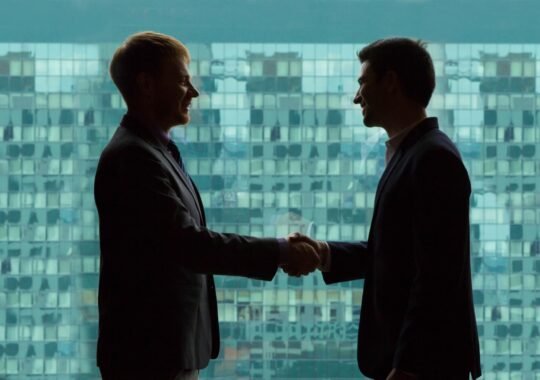Key Takeaways:
- Identifying signs of roof damage early can prevent costly repairs and potential revenue loss.
- Regular maintenance and inspections are essential for prolonging the lifespan of your commercial roof.
- Understanding various roofing issues helps in making informed decisions about repairs or replacements.
Table of Contents:
- Introduction
- Visible Damage and Wear
- Water Leaks and Staining
- Increased Energy Bills
- Aging and Material Deterioration
- Poor Roof Drainage
- Mold and Mildew Growth
- Warping or Sagging Roof Structure
- Conclusion
Introduction
The roof is integral to any commercial building, safeguarding against the elements and ensuring a safe environment for business operations. However, like any other structural element, commercial roofs are susceptible to wear and tear over time. Identifying early signs of damage helps maintain structural integrity, prevents costly repairs, and minimizes disruptions to business operations. Understanding these indicators is crucial for any building owner or facility manager who aims to preserve the longevity and functionality of their roof.
Visible Damage and Wear
One of the most apparent signs that your commercial roof requires attention is visible damage or wear. This can manifest as cracked or blistered roofing materials, missing or loosened shingles, and noticeable punctures. Such damages often result from harsh weather conditions, foot traffic, or natural aging. Companies like Delta Innovative Services specialize in addressing these visual cues and can provide solutions that mitigate further damage. Periodically inspecting your roof for these signs can help you address issues before they escalate into more significant problems.
Water Leaks and Staining
Water leaks are a significant concern for any commercial property owner. Leaks can result from damaged flashing, compromised seams, or saturated underlayment. These issues can lead to extensive building water damage, affecting its structural integrity and interior aesthetics. Unexplained stains on walls, ceilings, or water in unexpected areas can indicate a leaking roof. Timely intervention is essential to prevent the spread of water damage and protect the building’s interior.
Increased Energy Bills
Another telling sign of roofing problems is a sudden increase in energy costs. A well-maintained roof contributes to the building’s insulative properties, helping maintain a constant indoor temperature without excessive heating or cooling systems. If you notice a spike in your energy bills, it could indicate that your roof is no longer effectively providing this insulation. Gaps, deteriorated insulation, or damaged roofing materials can allow heat transfer, reducing energy efficiency. Investigating and addressing these issues can restore energy efficiency and reduce costs.
Aging and Material Deterioration
The age of your roof is a significant factor in its reliability. Most commercial roofs are designed to last between 15 to 30 years, depending on the materials used and the quality of installation. As the roof ages, it becomes more susceptible to damage due to material deterioration. Shingles and other roofing materials may become brittle, lose their protective granules, or show signs of old age. Keeping track of your roof’s age and condition helps plan for eventual replacement before severe failures occur.
Poor Roof Drainage
Efficient drainage is critical for maintaining a roof’s health, as standing water can lead to serious roofing issues. Ponding water can increase the roof’s loads, leading to long-term structural damage or leaks. Regularly checking and cleaning gutters, downspouts, and drainage systems is essential to ensure proper functioning. Blockages can cause water to back up and pool, further exacerbating the risk of leaks and damage. Maintaining clear drainage channels is one of the simplest yet most effective ways of preventing water-related roof damage.
Mold and Mildew Growth
Mold and mildew are more than just unsightly; they are a clear sign of moisture issues within the building. The presence of mold, mildew, or even moss on your roof or in areas immediately beneath suggests persistent moisture problems that could arise from leaks or inadequate drainage. Mold and mildew not only compromise the air quality within the building but can also hasten the deterioration of roofing materials. Addressing the underlying moisture issues is key to eliminating mold and preserving indoor air quality and roof longevity.
Warping or Sagging Roof Structure
Structural deformations such as warping or sagging are critical signs that immediate attention is necessary. These issues often indicate severe underlying problems, such as water damage, excessive loads, or compromised structural support. They could lead to dangerous structural failures and safety hazards if left unresolved. These issues warrant a thorough evaluation by professionals to determine whether repairs or replacement is the best course of action to restore the roof’s integrity and ensure the building’s safety.
Conclusion
Commercial roofs require careful monitoring and maintenance to withstand the demands of time and nature. By monitoring these signs of damage and proactively addressing them, property owners and managers can ensure the longevity and efficiency of their roofs. Regular inspections and timely interventions are key to identifying issues early and preventing costly remediation efforts or unexpected downtime. Through informed maintenance strategies, you can safeguard your investment, maintain structural health, and ensure an uninterrupted business operation.





